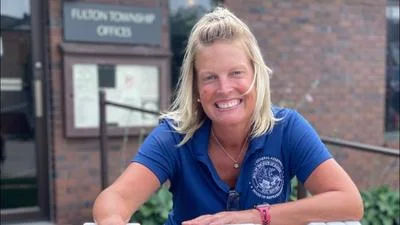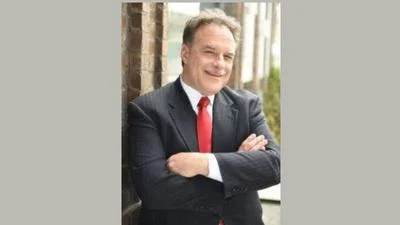Chicago Metropolitan Agency for Planning Coordinating Committee met Feb. 13.
Here is the minutes provided by the committee:
Members Present: Frank Beal (Chair, CMAP Board), Matt Brolley (CMAP Board), Sheri Cohen (Human and Community Development Committee), Jason Keller (Economic Development Committee), Farzin Parang (CMAP Board), Mayor Rick Reinbold (CMAP Board), Sean Wiedel (Environment Committee), Mayor Terry Weppler (CMAP Board), Diane Williams (CMAP Board), Rocco Zucchero (Transportation Committee)
Staff Present: Stephane Phifer (Staff Liaison), and CMAP staff Patrick Day, Jesse Elam, Kristin Ihnchak, Maggie Jarr, Stephanie Levine, Jason Navota, and Sherry Kane
Others Present: Ryan Peterson (KaneKendall Council), and Emily Karry and Mike Klemens (Lake County Council)
1.0 Call to Order
The chair, Frank Beal, called the meeting to order at approximately 8:05 a.m.
2.0 Agenda Changes and Announcements
None.
3.0 Chair Report
Frank Beal reported that the CMAP Board had considered its committee structure in terms of implementing ON TO 2050, which resulted in a single Coordinating Committee and the merger of the Land Use and Housing Working Committees. The committee would be asked to do a number of things—to advise the Board and provide recommendations to the Board on various matters; another is a chance to advise the staff on works in progress; and finally, to do a better job of integrating the work of the working committees, by giving an opportunity to those chairing the working committees to share their work in more detail. The committee, Beal went on to say, is made up of six members of the Board and five members who lead the working committees. When asked to chair the meeting, Beal continued, he agreed to do so for only one year. Initially it was also thought that the committee would only meet every other month. Beal turned to Deputy Executive Director of Planning, Stephane Phifer to explain why meeting more frequently would be more beneficial. Members agreed to meet monthly, with the stipulation that if it were not necessary to do so, meetings could be cancelled.
4.0 Approval of Minutes
A draft of the minutes of the Joint Meeting of the Planning and Programming Coordinating Committees of October 3, 2018, was presented for informational purposes.
5.0 Committee Charge, Proposed Schedule for 2019
Turning to the committee’s work plan, CMAP staff Stephane Phifer reported while a number of topics are TBD, the work of this committee should mirror that going on at the working committee level as well as staff level in terms of projects. The resulting agenda would then be more fluid and would address topics as they arise. When asked, committee members agreed, it would be a good idea for them to spend maybe 20-25 minutes reporting on matters they too are working on. Would you plan on bringing topics that would be elevated to the board versus yes, there was a report-these were the questions asked-this was general response. Given there are six members of the Board on this committee, it is likely whether formally or informally they are in a good position to report to the full board on these topics. Some items may actually be required by the by-laws for the Coordinating Committee to consider before action is taken by the full board. Meant as more like a committee-of-the-whole where discussions can take place at a deeper level, information can then be shared with the other board members. A cross-pollination scenario too where something that the working group is developing to get the perspective of the board members as well as the perspective of the other working groups to then be taken back to incorporate into a final product. When asked what matters do require vote in the by-laws, staff reported that those will actually need to be changed to reflect the single coordinating committee—not certain, staff would need to take a closer look at the by-laws. Making the full board aware of the extent and the value of the issues that the working committees consider is one dimension of the coordinating committee. Suggestions for changes and reformats are welcome and members were encouraged so speak up.
Having conducted much of the background work in the redesign that was presented to the Board, CMAP staff Stephanie Levine was asked to report some of the procedural changes that had come about. To allow the working committees to more directly provide project input , projects in early to mid-phase of development will be presented (versus fully completed projects). Levine went on to say that working committee liaisons are developing annual work plans and are collaborating more closely to identify new content and topics for their committees. , Staff are also recruiting new members from CMAP’s network that was expanded throughout plan development, to make sure the three plan principles are represented within each committee, Levine concluded. Asked if there would be opportunity for the working committees to present to each other, Levine responded yes, with joint meetings very likely. Also asked was if committees could get minutes (or staff report) of other committee meetings.
6.0 ON TO 2050 Implementation: Local Capacity Building
Deputy Executive Director of Planning, Stephane Phifer, introduced the local capacity building team: Kristin Ihnchak, Patrick Day, and Maggie Jarr. There are many capacity building activities underway throughout the agency, Phifer reported, and today’s topic is related to planning. Phifer gave a bit of background on the Local Technical Assistance (LTA) program was developed to implement the recommendations of GO TO 2040 at the local level. Building on that, with ON TO 2050, a strategy paper on Municipal Capacity also resulted in the question: do local governments have capacity on the ground to take that next step and implement plans/projects? One recommendation in the plan is to build capacity of local governments that support a strong quality of life, building capacity to access financial resources, and provide professional development opportunities. Not a finished product at this time, Phifer continued, there are four strategies to consider-- coordinated investment studies, planning research, embedded staff planner (ESP) demonstration project, and a leadership academy. Very excited about the ESP program, one of which had been approved the night before at Calumet Park, another up for approval on Thursday at Sauk Village, the purpose of which is to both what we can provide to them, but also what we can learn from them. The two communities were selected from an LTA application from SSMMA with funding assistance from MacArthur Foundation and the Chicago Community Trust for the three-year demonstration project for six communities. Are there defined deliverables at the conclusion of the program? Try not to tell communities what they need, rather identify areas (i.e., transportation investment programs, public engagement, capital improvement programs, etc.) of things that planners can help with. While we should pay attention to those that have the most need, we should also concern ourselves with others that may slip along the way. Progress reporting may be available as early as next meeting. Phifer also asked for feedback on the leadership academy based on the following goals: how do we build a suite of training, networks, skill- building opportunities for a variety of audiences, ensuring that staff and elected officials have the training and resources to be effective and innovative? We’ve done Plan Commissioner Training, GIS Training, Developer Panels, etc., but now we want to take an inventory of what’s out there--what’s working, what’s not—identify gaps, find partners to fill gaps. How do we build a curriculum—what sequencing is recommended for elected officials and staff, for citizens, for advisory boards? Feedback by members included the following.
- Gear the training towards community members (versus citizens) to help them speak out on issues affecting their quality of life.
- Take a look at the IML academy for ideas or the National League of Cities REAL (racial, equity, and leadership) for mayors and managers.
- The Government Alliance on Racial Equity was another suggested model.
- Check university outreach—give them a skill, i.e., “construction career training”, a partnership with multiple community colleges, the tollway, and department of transportation.
- Training as a member of a city council seems lacking.
- Once analysis is done, make people aware of what is available, and what might be a good track or sequence of different type of trainings that might exist as well as the types we may develop.
- Check NIU Civic Leadership Academy, as well as Western Illinois University’s new program related to community and economic development, designed for the working professional.
- We have a robust civic tech community model as a group of people that know how to access public data.
- How about a mentorship program—one community partners up with another? See how another community conducts their business. I.e., Kane County Planners group that meets once each year.
- Back to the buckets—transportation, public engagement, capital—engage the private sector and chambers of commerce.
- Health in all policies and equity in all policies, assuring that these are infused in the leadership academy.
- Don’t forget about new faces resulting from municipal elections coming up in April.
- Address lack of knowledge with mayors and elected officials related to advocating for certain legislation, i.e., 101, the life of a bill.
- There’s a bill (HB 305) prohibiting elected officials from spending money to attend trainings and conferences.
- Other than planning, will there be other components? Yes, the entire agency will be looking at how we address local capacity. The Planning Liaisons will be a good resource to tap to help identify gaps.
- Reality is that of limited resources of local governments, with the number of part- time mayors, voluntary councils, and limited staff and the demands that training imposes on their time. From a coordinated investment strategy idea—no one foundation, agency by itself can do this for all 284 municipalities. Three members are working together hoping to create collective resources on the south side for twenty-three municipalities on a single issues of economic growth, versus having twenty-three municipalities pursue economic growth.
7.0 Agency Updates
Chairman Frank Beal reported that CMAP is holding a call for projects for the regional surface transportation program shared fund, CMAQ, and locally-programmed transportation alternatives programs.
8.0 Working Committee Updates
The Chairs of the working committees were asked to report on activities. The Transportation Committee is asking each agency represented on the committee will be asked to provide an update on programs or initiatives, beginning at its February 22 meeting and continuing throughout the year. The Economic Development committee reported that it had gone through an exercise looking at membership and made strategic choices as to who would volunteer either in or out of the committee. ENR is also looking at membership and expertise that they don’t currently have related to climate and resilience topics and would take suggestions for that expertise. Likewise, Human and Community Development is looking at the committee name, mission and re-imagining it within the new structure and the context of ON TO 2050. The Economic Development Committee had instituted a “no phone” option some time ago, and questioned lessons learned from the last refresh of the working committees, had staff reporting that the working liaisons are meant to development relationship with their members and engage the experts, hence the “no phone” option was set up.
9.0 Other Business
There was no other business.
10.0 Public Comment
There were no public comments.
11.0 Next Meeting
The coordinating committee will meet next in March.
12.0 Adjournment
The meeting adjourned at 9:12 a.m.
https://www.cmap.illinois.gov/documents/10180/977407/Minutes02-13-2019.pdf/73640243-dae3-8923-658f-f3cac0604b9e






 Alerts Sign-up
Alerts Sign-up